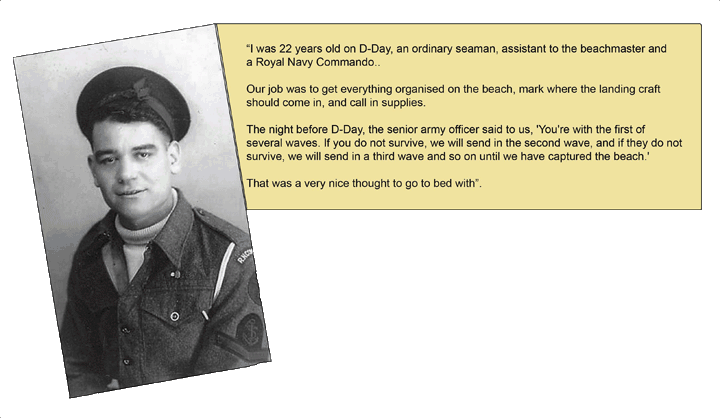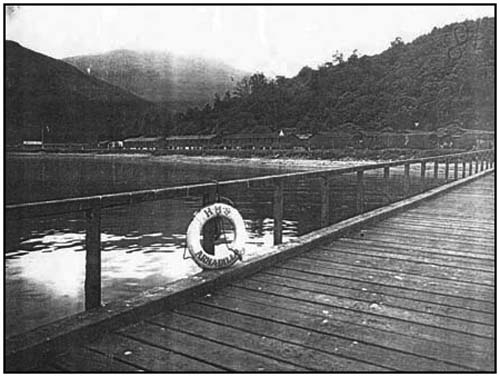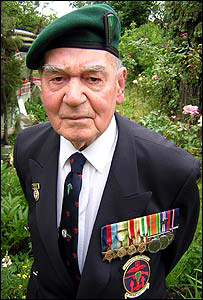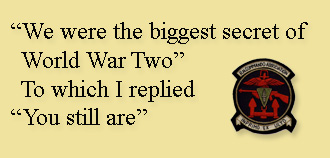Ken Oakley
8 September 1921 Page compiled by Rick Smallman, Port Macquarie, NSW
|
|
I have the sad duty to inform you of the passing of Mr. Ken Oakley, following approximately 8 weeks in hospital fighting a variety of different problems, he finally passed away peacefully in hospital with his family present.
His funeral was on Thursday 25 October 2007 at 1.30pm at Christ
Church, Colliers Wood where a church service was held, followed by a
celebration in the church hall. During the celebration close relatives
escorted Ken to Blackshaw Road Crematorium.
Ken’s ashes will be put to rest at a later date in his Grandparents grave with
his Parents ashes in Holy Trinity Churchyard, Dawley, I met Ken at my late Father's funeral and he was instrumental in helping me find information on HMS Armadillo and HMS Prins Albert. Ken had seen action in Sicily after joining the Royal Navy in January 1940. He was part of the Royal Naval Beach Commando, whose objective was to organise the beach throughout the campaign for the forces to land. Ken Oakley was a seaman chosen to act as bodyguard to the beach master on Sword Beach on D-Day. He was part of the first wave and was on the beaches until early July, where he was vulnerable to attack. I, for one, am proud to have known him.
Rick Smallman
The first photograph I received from Ken Oakley -HMS Armadillo. Jetty at Ardentinny, Scotland
|
|
Written by Ken at Fox 1 on D-Day.
The roar of Allied naval bombardment passed overhead and soon we heard the chatter of small arms fire directed as us. We evaded all the small arms fire, but suddenly the dreaded steel stakes with mines or shells attached to them loomed ahead of us. Daylight was now upon us and the cox'n did very well to miss a shell attached to a stake on our starboard side. Then came the order ‘down ramps’ and our time had come.
From Left: Ken Oakley, William Walsh and John Usher One bodyguard to each Beachmaster. 'F(ox)' RN Commando Group Cowplain Woods, Portsmouth. Prior to D-Day Normandy
Click image to enter photo gallery
Copyright 2007 Rick Smallman [Homepage] and the RN Research Archive
|




